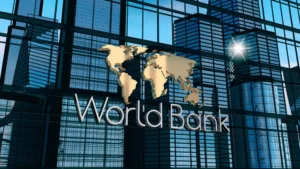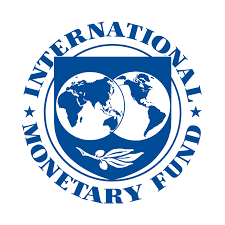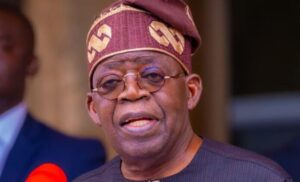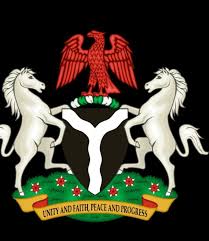By Princess Gloria Adebajo-Fraser MFR.
The National Patriots.
October 2025
When the World Bank released its latest report claiming that 139 million Nigerians live below the poverty line, it sent shockwaves through policy circles. The Presidency, through Sunday Dare, Special Adviser on Media, dismissed the report as statistically deceptive and devoid of Nigeria’s realities.

That reaction is not a political reflex — it is an evidence-based rebuttal grounded in data, cultural truth, and economic context. Nigeria’s condition is challenging, but not catastrophic. The claim that over half of Nigerians live in poverty is simply not compatible with facts on the ground.
1. New Survey Shows a Much Lower Poverty Figure
A joint survey conducted by HeadlineNews.News and the National Patriots in September 2025 reveals a vastly different picture.
According to the findings, only about 10 million Nigerians — roughly 4.5% of the population — currently live below the poverty line in strict monetary terms. Even more striking: all 10 million still feed daily.
No verified report exists — in the media, hospitals, or aid organizations — of Nigerians dying of hunger or going a full day without food. This is not semantics; it’s evidence. Poverty, in Nigeria’s context, does not equate to starvation.
2. The Myth of Urban Poverty
The World Bank’s model assumes uniform poverty across Nigeria, which is misleading. In reality, the poverty index is concentrated in a few rural and conflict-affected zones, mostly in the North-East (Borno, Yobe, parts of Adamawa) and parts of the North-West (Zamfara, Katsina) — areas disrupted by insurgency, displacement, or weak agricultural productivity.
By contrast, urban centers like Lagos, Abuja, Port Harcourt, Enugu, Ibadan, Kano, and Onitsha maintain thriving formal and informal economies. These cities sustain over 60% of Nigeria’s GDP and host a population that is far above subsistence level.

The average urban worker — from bus drivers to barbers, traders, and tailors — earns between ₦60,000 and ₦300,000 monthly, with daily income for informal earners averaging ₦5,000 to ₦15,000.
Even street beggars in major cities reportedly make about ₦3,000 a day, often receiving food and alms from religious houses and passers-by. That equates to roughly ₦90,000 a month, nearly twice the old minimum wage. Such realities make the World Bank’s blanket poverty estimate implausible.
3. Nigeria’s Socio-Cultural Economy Defies Western Poverty Metrics
Nigeria’s socio-cultural system is one of the most communal in the world. The local proverb “onye aghana nwanne ya” — no one leaves his brother behind — defines how Nigerians survive and support each other.
Across ethnic lines, families, churches, mosques, and local associations function as social safety nets. Nobody eats alone. Food, shelter, and support circulate within communities.
“Each Nigerian is his brother’s keeper,” one survey respondent told HeadlineNews.News in Lagos. “Even when people have little, they share.”
This embedded cultural solidarity makes the idea of “mass hunger” in Nigeria not just exaggerated but incompatible with the nation’s way of life.

4. Food in Nigeria: The Cheapest in the World
The HeadlineNews.News Global Food Affordability Index (2025), compiled from 110 countries, ranks Nigeria as the country with the cheapest food prices in the world.
For just $1 (about ₦1,500), an average Nigerian can buy a full lunch — rice, beans, or garri with meat or fish. By contrast, the same meal costs:
$8 (₦12,000) in the UK,
$5 (₦7,500) in India, and
$6 (₦9,000) in Kenya.
Even basic commodities tell the story.
A bottle of Fanta that sells for ₦200 in Nigeria costs the equivalent of ₦10,000 in the UK.
This disparity shows why the World Bank’s poverty methodology — based on purchasing power parity (PPP) — fails in Nigeria’s case. Local consumption capacity is far higher than income figures suggest.
5. Religion as an Economic Indicator
One of the clearest contradictions in the World Bank’s report is visible in Nigeria’s religious landscape.
If 139 million Nigerians were truly below the poverty line, how would thousands of churches and mosques across the country not only survive but expand daily?
Nigeria’s faith sector generates billions annually. Churches and mosques record overflowing attendance and significant tithes, offerings, and donations — a sign of disposable income, not destitution.
Religious institutions thrive on contribution, not charity. Their financial vitality proves the resilience of household incomes across the middle and working classes.
6. The Working Class Feels the Pinch — But Is Not Poor
The Presidency and analysts agree that high cost of living, not abject poverty, is the country’s biggest challenge.

Subsidy removal, electricity tariff hikes, and unregulated banking fees have raised daily expenses, especially in transport, food logistics, and rent. The working class — about 35–40% of Nigeria’s 220 million population (≈ 75–85 million people) — bears this pressure most.
They are not impoverished but squeezed by inflation. The difference is crucial: economic pressure is not the same as poverty. The pain of reform is temporary and policy-driven, not structural destitution.
7. The Bretton Woods Effect — Pain from Imported Conditionalities
It must be stated plainly: Nigeria’s cost-of-living crisis stems largely from conditionalities imposed by Bretton Woods institutions — chiefly, subsidy removal and currency unification demanded for loan approval.
While necessary for long-term stabilization, these reforms have temporarily eroded household purchasing power.
The World Bank cannot impose austerity, then lament its social consequences. The path forward is clear — the institutions should renegotiate loan conditions to give Nigeria fiscal breathing space, allowing subsidies on essential goods like power, food, and transport.
8. What the Numbers Really Indicate
Using domestic economic data, wage patterns, and consumption indices:
Indicator Estimated Value (2025) Comment
Population 220 million Current census estimate
Minimum Wage ₦70,000/month 133% increase from ₦30,000
Working Class 35–40% (≈ 75–85 million) Formally or informally employed
Estimated Below Poverty Line ≈ 10 million (4.5%) Able to feed daily
Inflation 24% Driven by fuel and logistics
Poverty Distribution Mostly North-East & North-West Linked to insecurity, not economic structure
The data reinforces the Presidency’s claim that the World Bank’s figure of 139 million is baseless. Nigeria’s real challenge is not mass poverty — it’s temporary inflationary distress and policy lag caused by global loan conditions.
9. The Real Picture: Resilient, Resourceful, Restless
Nigeria is a paradox of hardship and hope. Yes, inflation hurts. Yes, reforms sting. But Nigerians adapt, survive, and thrive.
Our markets bustle daily. Restaurants are full. Ride-hailing, logistics, and e-commerce are booming. Artisans and micro-traders power the cities. Food flows from the farms to the tables.
The same people counted as “poor” by the World Bank are sending children to school, paying rent, buying phones, attending weddings, and contributing to religious offerings. That is not the behavior of a starving nation.
10. A Call for Honesty and Context
The Presidency is right: poverty is not a mathematical abstraction. It is lived reality — and Nigeria’s reality defies Western templates.
The World Bank’s 139 million figure may reflect spreadsheet logic, but it fails the common-sense test. In a country where $1 still buys lunch, where every street corner runs a business, and where cultural support shields families from starvation, such numbers are not credible.
Nigeria’s real struggle is against rising prices and policy-driven cost burdens, not starvation or destitution.

The World Bank must revise its models to account for affordability, informal resilience, and cultural solidarity — the invisible forces that keep Nigeria alive and moving.
Conclusion
Nigeria is not poor; it is pressured. It is not broken; it is burdened.
At least 85 million Nigerians feel the pinch of reforms, but they are not destitute.
Only about 10 million, mostly in rural conflict zones, can be said to live below the poverty line — and even they eat daily.
The Presidency’s rejection of the World Bank’s claim is justified and patriotic. The problem is not poverty; it’s policy pain — and that, unlike despair, is temporary.
Nigeria remains the land of resilience, faith, and abundance — a country where dignity thrives, even in difficulty, and where no one truly goes hungry.
Princess Gloria Adebajo-Fraser MFR.
The National Patriots.
Governance Consultant, Public Analyst.




